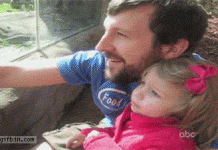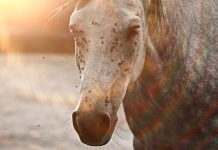Rottweilers are protectors of homes on the outside and cuddly playmates on the inside. These dogs are world-class guard dogs for their self-assured, brave, and obedient personalities, making them one of the most popular pet dogs. German Rottweiler and American Rottweiler ? If you are planning to get one, you may want to make sure which rottweiler you’re getting.

Thus, we’ll fill you in about this lengthy debate about Rottweiler’s nationalities so that you can distinguish between a German rottweiler and American rottweiler. This way, you would know what specific dog you’re getting.
German Rottweiler and American Rottweiler
Rottweilers are descendants of Roman drover dogs, dating back to the roman empire.
After the Romans moved to Southern Germany, these dogs continued to be used in herding and driving cattle.
In fact, they were so useful and famous, they were named after Rottweil, which is a small town in Southwest Germany.
Fast-forward to 1921, an association called the Allgemeiner Deutscher Rottweiler Klub (ADRK) was established to preserve the precious genes of Rottweilers by setting strict standards for breeding them.
And that is where all the difference occurs.
German Rottweilers
German Rottweilers breed according to ADRK standards, and any pups that deviate even slightly from the set conditions cannot register and are not called “true” rottweilers.
For instance, if a dog is not born in Germany, it won’t be called a correct Rottweiler.
Or, if a dog does not have the exact type of skin coat or body dimensions that ADRK has set, it won’t pass as a correct Rottweiler.
Those “faulty” dogs will not be allowed to breed because they will create a generation of dogs that aren’t pure rottweilers.
American Rottweilers
Rottweilers in America are bred according to the American Kennel Club (AKC) standards.
This club does not even nearly have the strict standards for passing the ZTP test (breeding suitability test) as ADRK.
Faulty dogs can breed in America; hence, the name American rottweiler.
The truth is, both German and American Rottweilers are the same breed of dogs because the bloodline of both the types of dogs eventually goes back to Germany.
The only difference is that American Rottweilers are often slightly different in some of their physical features.
The physical difference is often so stark that people often call the American Rottweiler a totally different breed!
Characteristics of a True German Rottweiler
So, how can you distinguish between German rottweiler and American Rottweiler or the “true” and “faulty” rottweiler?
The FCI gives you a detailed description of what a correct Rottweiler should look like, and they are:
1. Tail
We’re starting with the tail because this is the most evident and common difference between German and American Rottweilers.
American Rottweilers will often have docked tails as this practice is still pretty popular in America.
That said, the FCI clearly states that dogs with docked tails are not pure Rottweilers.
Additionally, the tail, when hanging down, should reach the dog’s hocks or can be a bit longer.
It should also have a slight curve when lifted in excitement.
2. Head
A correct Rottweiler will have a broad, medium-length head with a broad nose and large, black nostrils.
The eyes should be a beautiful almond shape and brown, while the lips are black as ever.
The dog should also have 42 teeth with black or very dark gums.
If the dog has loose skin on the head, droopy eyes, or an underbite, then it is not a true Rottweiler.
3. Body
A German rottweiler has a broad and deep chest with a straight back and short, strong loins.
Also, the limbs should be straight (from the front) and be strong and muscular, with hard padded toes and black nails.
4. Color
The coat of the rottweiler needs to be medium-length jet black with rust-colored markings over the body.
The undercoat should also be present on the neck and the thighs.
There are a few things to look for when it comes to markings.
A rottweiler should have one spot of rust above each eye, cheeks, and a stripe of rust on either side of the snout.
Also, make sure the nose is black, and no face markings are over it, or on the neck.
Ther should also be two triangular marks on the dog’s chest, stretching down towards the legs and toes.
5. Temperament
While the physical characteristics are an essential part of the test, the harder one to pass is the temperament tests in the ring show.
The rottweiler should have a well-tempered, calm, and self-assured personality.
It should also be obedient, active, eager to work, and be protective of family members, along with being playful and silly with them.
The dog should be courageous and have a sharp, alert, and intelligent mind.
These are only a few things to look for in a purebred German rottweiler.
You can find a more detailed description of a correct Rottweiler here.
The Faults
There are some characteristics that a purebred and true rottweiler will never have.
Here are a few obvious ones:
- Curly tail
- Red, blue, or white coat
- Long coat
- Excess wrinkling on the forehead and cheeks
- Underbite
- A slow, lazy. and not-so-straight trot
- Limbs that are too close together
Other Things to Make Sure Of
After you have chosen a reputable breeder, there are certain certificates you need as proof from the breeder.
For instance, make sure they give you documents about pedigree with an approval stamp from ADRK or AKC.
You should also get a certificate of birth and a certificate that contains the dog’s identification code, which is also tattooed on its body.
For further precautionary steps, get to know the dog’s medical history, its parents, and make sure you meet the dog before accepting it from your breeder.
Conclusion
If you really want the purest and most genuine form of rottweilers and is confused between German rottweiler and American rottweiler, your best bet is a rottweiler born in Germany, of course.
But if such minor physical traits don’t matter, then the only thing you should care about is the Rottweiler’s health and whether it is trained and socialized correctly to be a safe and good-tempered pet.































